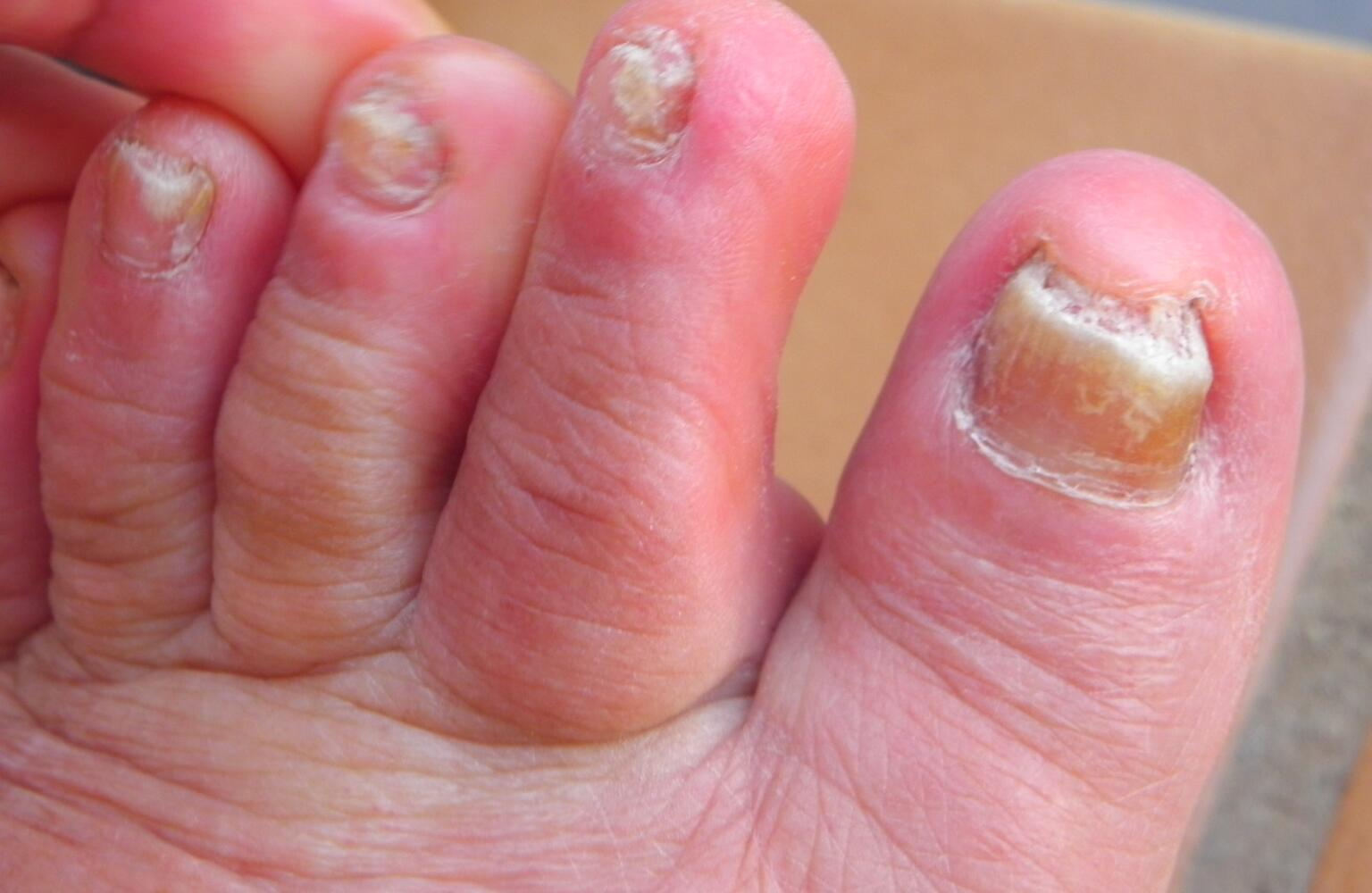Toenail fungus, also known as onychomycosis, is a ordinary fungal infection that affects the toenails. It is caused by different types of fungi, including dermatophytes, yeasts, and molds. These fungi thrive in warm, moist environments, making the feet, especially in the area around the toenails, a common location for infection.
The infection commonly starts as a white or yellow spot under the tip of the toenail. As the fungus grows, it can cause the nail to become thickened, discolored, brittle, and distorted in shape. In more severe cases, the nail may lift off the nail bed, which can be painful and lead to secondary bacterial infections.
Toenail fungus can be persistent and difficult to treat. It
is not usually a serious medical condition, but it can be bothersome and
cosmetically undesirable. If left untreated, it can spread to other nails or
even to the skin, leading to more significant problems.
Treatment options for toenail fungus may include topical
antifungal medications, oral antifungal medications, or, in severe cases,
surgical removal of the affected nail. It's important to note that even with
successful treatment, toenail fungus can sometimes recur.
If you observed you have toenail fungus, it's necessary to
contact a healthcare professional for an exact diagnosis and suitable treatment options. They can give proper guidance on your
specific situation.
Toenail fungus, also known as onychomycosis, can be caused
by different types of fungi. The most common culprits are:
Dermatophytes: These are the most common fungi responsible
for toenail infections. They feed on keratin, which is a protein found in nails
and skin. The most common dermatophyte species that cause nail infections
include Trichophyton rubrum, Trichophyton mentagrophytes, and Epidermophyton
floccosum.
Yeasts: Candida species, such as Candida albicans, can also
cause toenail infections. Yeasts are opportunistic fungi that can multiply when
conditions are right, such as when the normal balance of microorganisms on the
skin and nails is disrupted.
Molds: Certain types of molds, such as Scopulariopsis
brevicaulis and Fusarium species, can cause nail infections. These molds are
less common culprits compared to dermatophytes and yeasts.
It's worth noting that the specific type of fungus causing
the infection may influence the choice of treatment, as some antifungal
medications are more effective against certain types of fungi than others.
However, a healthcare provider is best equipped to determine the appropriate
treatment based on the individual case.
If you suspect you have a nail fungus infection, it's
recommended to consult a healthcare professional for an accurate diagnosis and
to discuss the most effective treatment options for your specific situation.
Treating toenail fungus can be challenging, and there is no
one-size-fits-all cure. The effectiveness of treatment can vary depending on
the severity of the infection, the type of fungus involved, and individual
factors. Here are some common approaches to treating toenail fungus:
Topical Antifungal Medications: Over-the-counter or
prescription-strength antifungal creams, ointments, or nail lacquers can be
applied directly to the affected nail(s). These treatments are typically more
effective for mild to moderate cases.
Oral Antifungal Medications: Prescription oral antifungal
medications are more potent and are often reserved for more severe cases of
toenail fungus. They work by attacking the fungus from within the body.
However, they may have potential side effects and interactions with other
medications, so they should be used under the supervision of a healthcare
provider.
Laser Therapy: Laser treatment involves using focused light
energy to target and kill the fungus. It is considered a newer treatment option
and may have varying levels of effectiveness. More research is needed to build its long-term efficacy.
Surgical Removal of the Nail: In severe cases where the
infection is particularly stubborn or painful, a healthcare provider may
recommend removing the affected nail. This allows for direct treatment of the nail
bed and can promote the growth of a healthy new nail.
Home Remedies: Some people try home remedies like applying
tea tree oil, vinegar, or other natural substances that are believed to have
antifungal properties. While these methods are generally considered safe, their
effectiveness is not well-established through scientific research.
Maintain Good Foot Hygiene: Keeping your feet clean and dry,
wearing breathable shoes and clean socks, and trimming your nails properly can
help prevent the spread and recurrence of toenail fungus.
It's important to note that toenail fungus treatment can
take time, often several months, and it may require persistence and
consistency. Additionally, even after successful treatment, there is a risk of
recurrence.
If you suspect you have toenail fungus, it's best to consult a healthcare provider. They can evaluate your specific situation and recommend the most appropriate treatment plan based on the severity of the infection and your medical history.


0 Comments